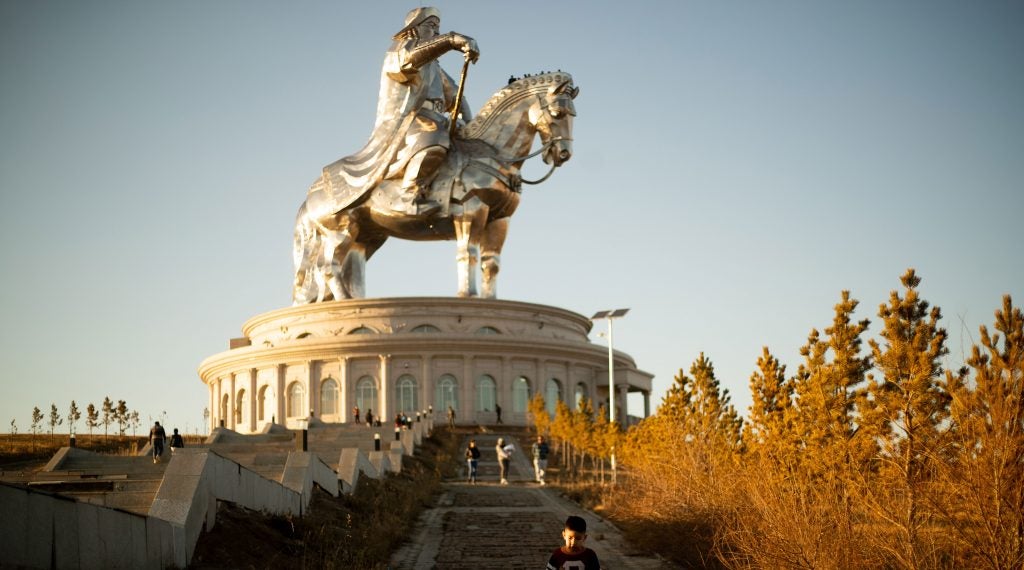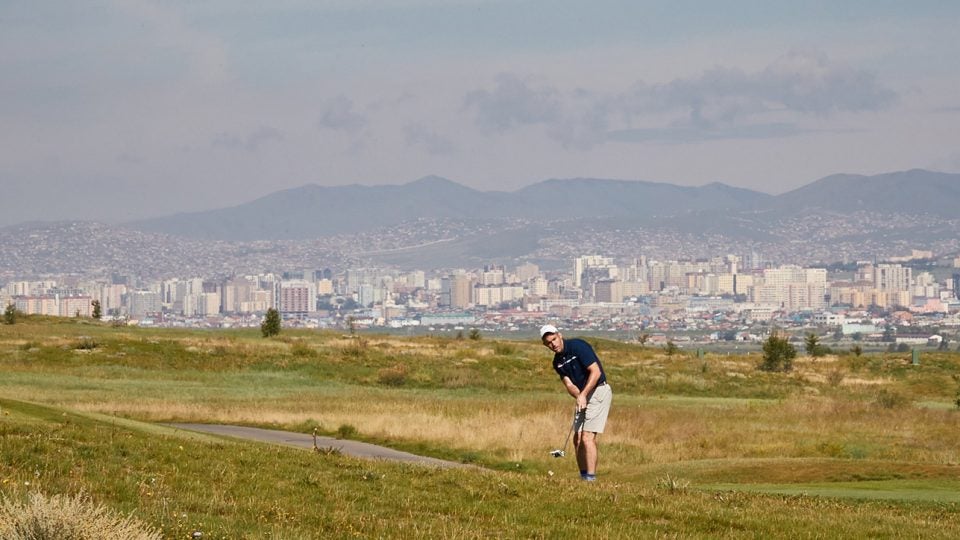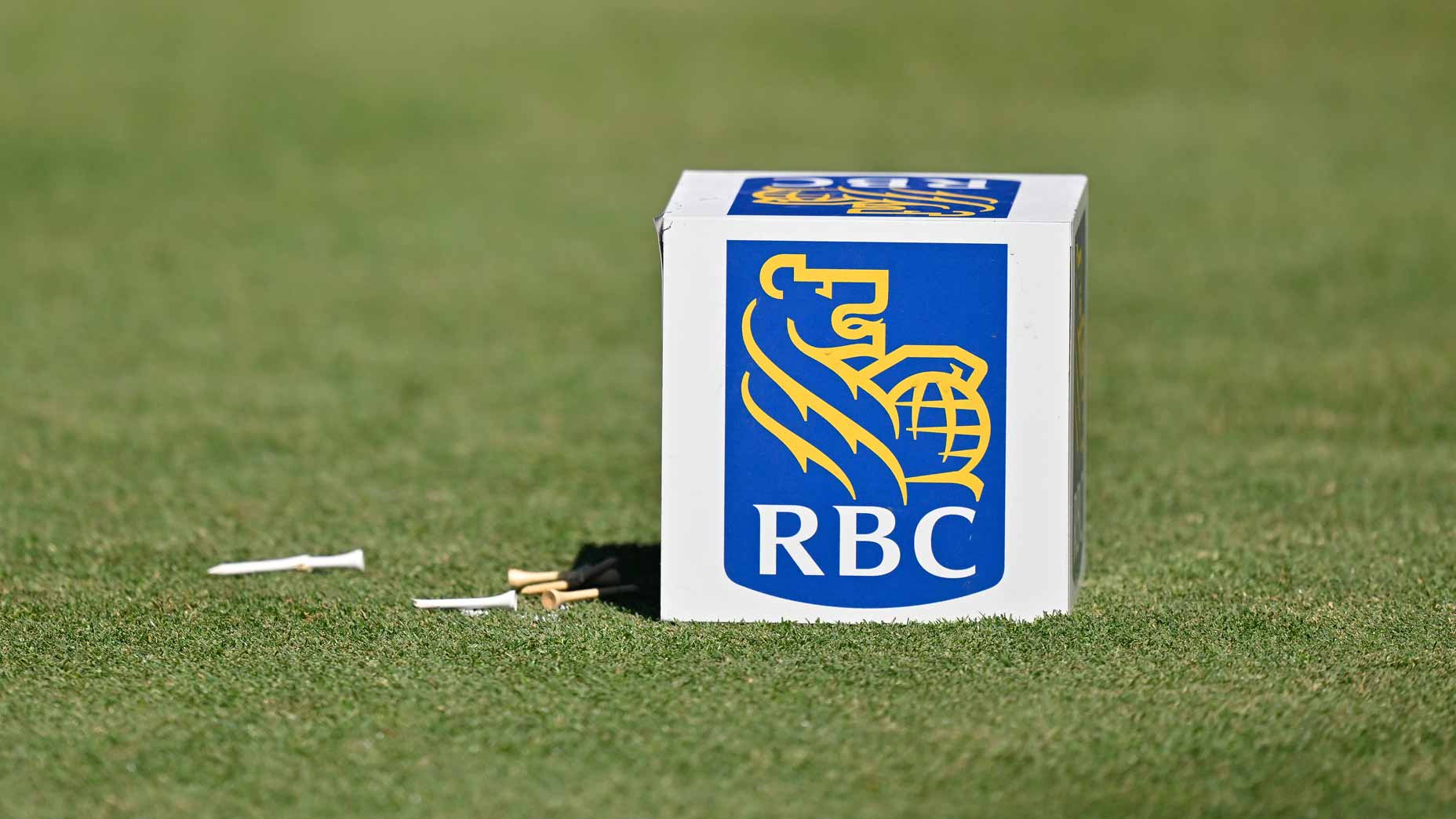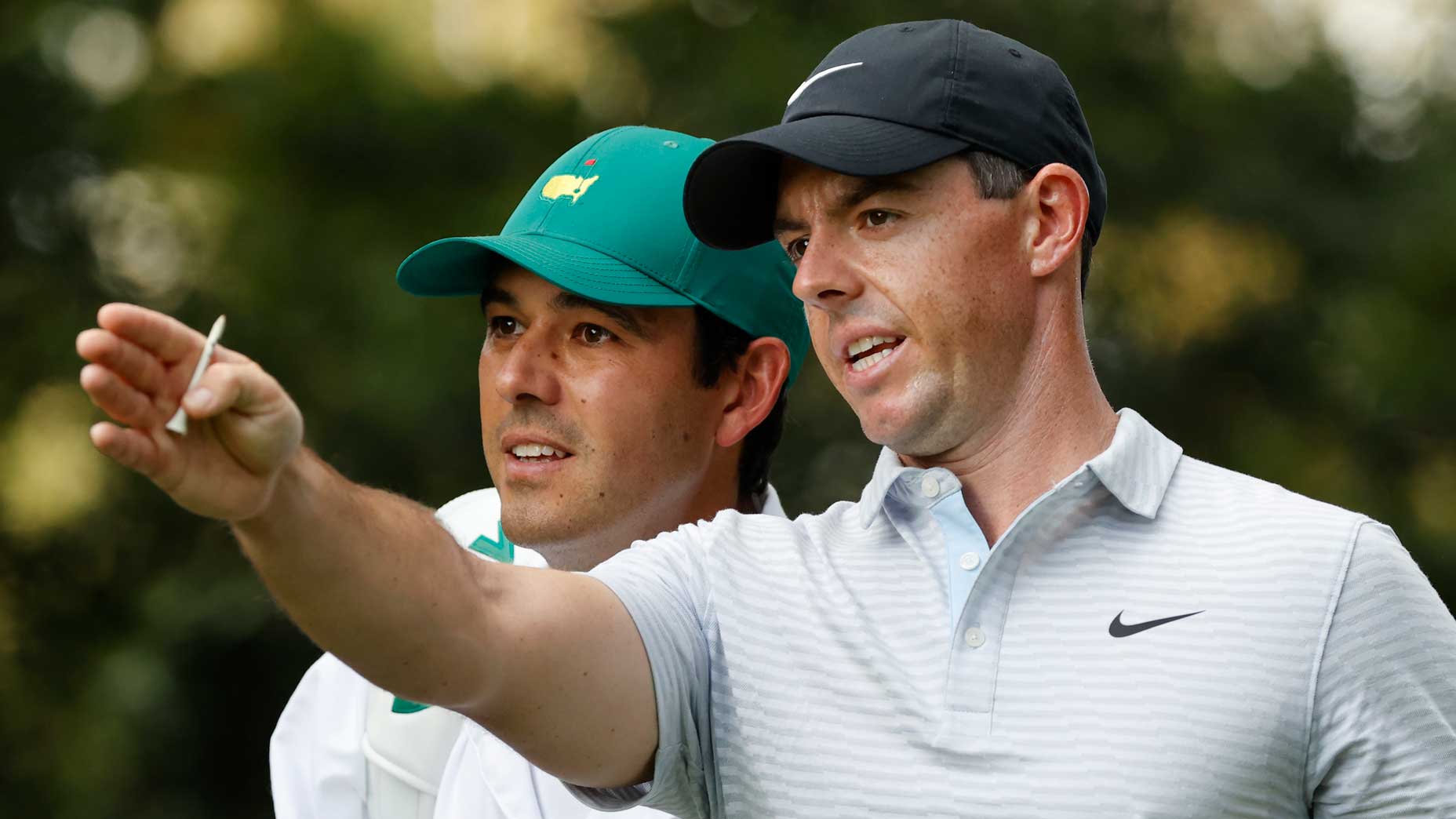“Next up on the tee…from America…Oliver Horovitz.”
There’s a smattering of applause, then silence. I tee up my Titleist, back away and take a practice swing. Swing speed: fast. Way too fast. Like, has-this-guy-ever-played-golf-before fast. Perhaps I’m flustered because just two days earlier I had flown 30 hours from Los Angeles via Beijing to the Mongolian capital of Ulaanbaatar and spent all of last night staring in a jet-lagged haze at my ceiling fan. Or perhaps I’m just catatonically nervous. Whatever the reason, this thing is happening. I’m in the field in the Mongolian National Open and somewhere en route to Ulaanbaatar I seem to have acquired a wicked slice.
The Mongolian National Open began 15 years ago as a small gathering of friends. Today it is the flagship event on the Mongolian Golf Association’s tournament calendar. Mt. Bogd is the host course: a wide open but still tough layout of 7,316 yards. At 4,400 feet above sea level, it offers sweeping views of the city. You won’t shoot your age here unless you’re very, very old, but you’ll have a blast trying. Seventy-two players, mostly Mongolian, all amateurs, are competing this year across the men’s and women’s divisions. Eighteen players carry handicaps under 10, three under 5. I’m the only tourist and one of two Americans. The other Yank owns a Mercedes dealership in town. We size up each on the range as if we’re Hogan and Snead.
As an added incentive to playing well, the top two Mongolian finishers with handicaps under 5.4 will qualify for the Asia-Pacific Amateur Championship at Singapore’s Sentosa Golf Club, the winner of which punches a ticket to the Masters. Yes, that Masters. (No Mongolian golfer has made the cut in an Asia-Pacific Am, but no matter. Mongolians, like Americans, are dreamers). So, for serious players in this country, the 72-hole Mongolian National Open isn’t just about national pride: It’s a legitimate — albeit highly aspirational — step toward the azaleas of Augusta National.
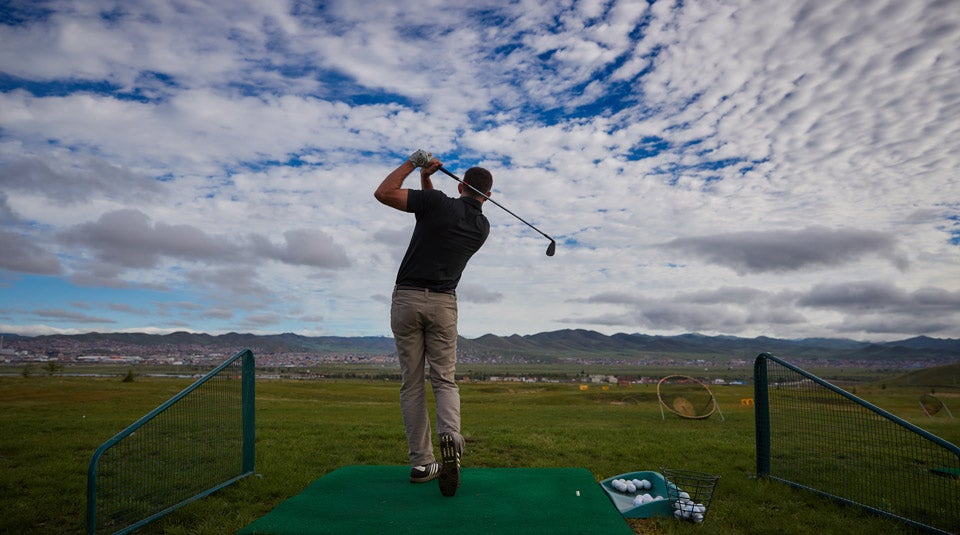
* * *
To better understand golf in Mongolia, you must first understand Mongolia itself. The Land of the Eternal Blue Sky is sandwiched between Russia and China. It’s an enchantingly serene, largely untouched country of 600,000 square miles and only three million people, about half of whom live in Ulaanbaatar (pronounced Oo-lan Bah-ter). With an average of just five residents per square mile, Mongolia is the least densely populated nation in the world. There are more horses than people, which is fitting, because horseback riding is as fundamental to Mongolians as driving is to Americans.
Though Ulaanbaatar has hurtled into the modern era, with skyscrapers, techno nightclubs and thousands of Priuses in the streets (fueled by a trade agreement with Japan), almost half of Mongolians still live nomadically in the countryside in gers — circular wood and canvas structures known more commonly as “yurts.” Here, they herd horses, goats, cattle, camels, and, up north, reindeer.
Golf arrived in Mongolia only recently. The first course, Nairamdal Golf Club, north of Ulaanbaatar, was built in 2003 by construction magnate Nemekhbaatar Bayartogtokh, after a South Korean friend of his proposed the idea. Among the highlights: caddies on horseback. When a player pulled a shot into the rough the loopers would gallop over and plant a flag beside the ball. (If the PGA Tour is looking to innovate, it could do worse than Michael Greller trotting after Jordan Spieth on an Under Armour-clad horse.)
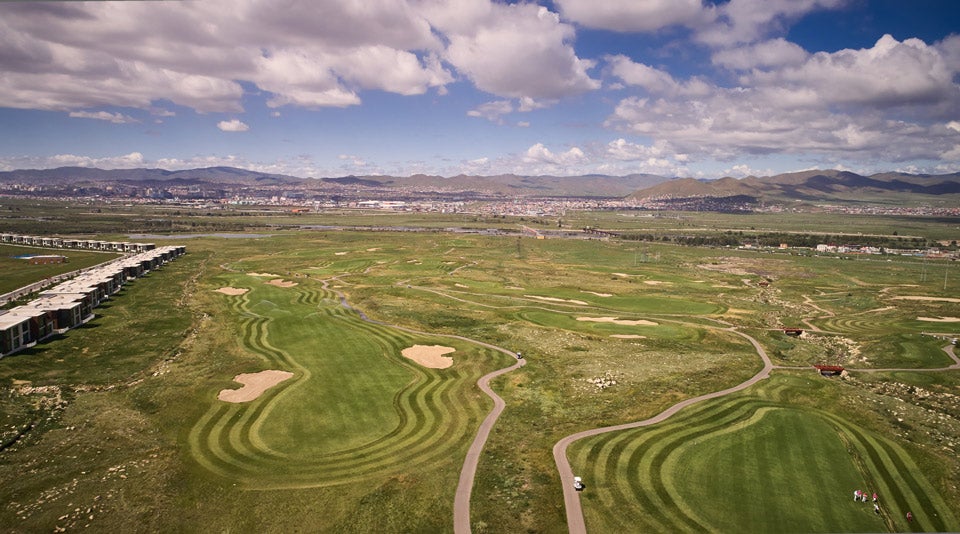
Today, there are still only 200 native players in the country (although that number is growing rapidly), plus another 100 expats — mainly Koreans, with a sprinkling of British, Chinese, Australians, and Americans. They have four courses at their disposal: UB-2 Golf Course (located in Colorado-conjuring Gorkhi-Terelj National Park), Riverside Golf Club (in western Ulaanbaatar), Sky Resort’s Mt. Bogd Golf Club (whose towering ger-inspired clubhouse would make Frank Lloyd Wright blush) and the imposingly named Genghis Khan Country Club.
Paltry selection? Hardly. To match that golfer-to-course ratio, the United States would need more than 333,000 courses.
* * *
I’ve been wanting to play in the Mongolian National Open since I first heard about the event two years ago. Golf in unexpected places has always fascinated me. I’ve played in the Arctic Open in Iceland, a 36-hole event in mid-summer where both rounds start at midnight. I’ve played sand golf in Saudi Arabia (where the greens are called “browns”), and Australian Outback golf on the world’s longest golf course, Nullarbor Links, which takes five days to play, because every hole is in a different town.
I’ve hit a golf ball off Everest Base Camp (with a 10.5-degree Ping driver kindly loaned to me by a member of Royal Nepal Golf Club). I’ve played underwater golf with Great White Sharks in South Australia (a friend and I rigged up a piece of astroturf to the bottom of our diving cage). I also caddied on the Old Course in St. Andrews for 11 years.
But the MNO seemed different: not just an event but an entrée into the country, to an exotic way of life. If I’m being honest, it also felt like a tournament I could actually win. I’ve been playing golf for 20 of my 32 years of life — way longer than most of the field. I was once a 2 handicap. I’ve won titles. Mongolian national champ … what a story to be able to tell the grandkids.
* * *
“Oh my God, I’m so sorry!”
I look at my caddie, Khishgee. She smiles politely, nods her head. But I know I’m letting her down. My campaign to bring home the Mongolian National Open trophy to New York City is off to shaky a start. On the 1st hole, I split the fairway with my drive and make a…9. Hoping to bounce back, I triple the next hole, then follow that with a quad. (I also got stung by a nettle on the 1st hole, which really hurts. I’m stupidly wearing shorts, which is a bad idea when you can barely keep the ball in Mongolia.)
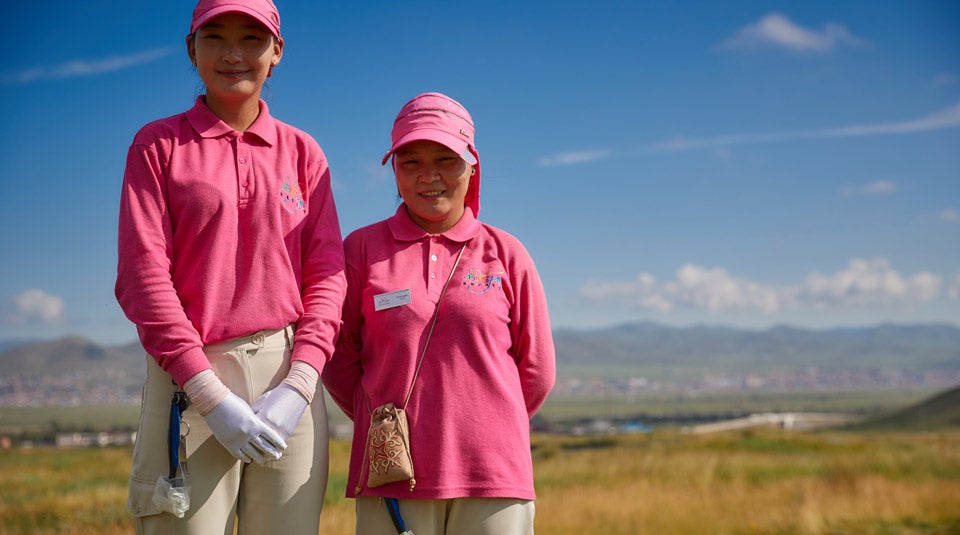
This course is hard. Although only 18 competitors are single-digit handicaps, we’re playing off the tips, on a setup that is like a mountainous Shinnecock. As the front-nine progresses, my escalating score — combined with the reality that I’m playing in a National Open — begins to get in my own head. My drives somehow grow even wilder.
My playing partners — including the secretary and general secretary of the MGA — feel obligated to help me search for my balls in the knee-high scraggly rough. Soon, they, too, fall prey to the nettles. I sense that I am severely testing the generous Mongolian spirit of helping those in need.
By the middle of the front nine, I’ve entered a sort of emotional black-out zone. I’ve completely lost track of my score. My playing partners, kind-hearted to the end, continually offer words of encouragement like, “It’s very difficult with the jetlag!” or, “Maybe it’s the rental clubs,” or, “Good double.” As we’re driving down the 11th fairway, I notice my playing partner scribbling something. I see “62” next to my name and realize it’s my front-nine score.
Sixty-two.
I improve by 18 shots on the back nine (hurrah!), but still sign for a 106. “Tomorrow will be better for you,” says my other playing partner, Munkhtushig Dul, a jolly 24-handicap who has just beaten me by 13 strokes. (Munkhtushig also lent me calamine lotion for my nettle stings.) I look up at the leaderboard. Best score of the day: 78. I’m already 28 back.
* * *
If there’s a defining element of Mongolian golfers, it’s that they’re completely obsessed with the game. This might have something to do with the brevity of the Mongolian golf season. To put it mildly, winter in Mongolia is, well, not mild. Ulaanbaatar is the world’s coldest capital. Although temperatures during the summer are ideal — with sunshine and 70 degrees the norm for 100 consecutive days — in winter the mercury can plummet to 40 below.
During these months, Mongolian golfers turn to a wildly popular alternative form of the game: screen golf. These facilities feature Korean golf simulators, replete with hilarious anime-style sound effects, and they are where most Mongolians learn to swing a club. “It’s a great introduction to the game for juniors, for everybody, really,” says Zoljargal Naidansuren, the MGA president. “Mongolians take screen golf very seriously.” There are five screen golf centers in Ulaanbaatar; most also have an indoor driving range, putting green, and bar. A round costs $10. There are even prizes. Make a hole-in-one and you win a 10-kilogram bag of rice.
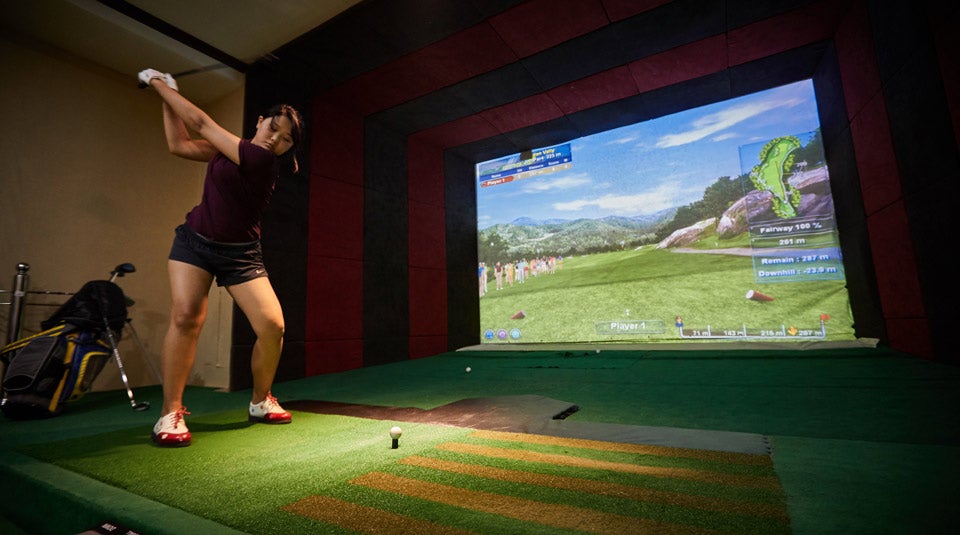
When summer finally arrives, Mongolian golfers return to their courses with abandon. “We go all-out during the golf season,” says Margad Jambaldorj, who used to run Riverside Golf Club and plays with a set of DeChambeau-inspired single-length irons. “In the summer, a lot of us play more than seven rounds a week.” Their 19th-hole libation isn’t Miller Lite, it’s airag, a mega-popular Mongolian drink consisting of fermented horse milk. Channeling my inner-Bourdain, I sample a bowl of the alcoholic concoction in a village outside Gorkhi-Terelj National Park and quickly confirm I’m a cow-milk guy.
Because Mongolia is 12 hours ahead of the East Coast, watching PGA Tour telecasts from Ulaanbaatar is a challenge. For the majors, Mongolian golfers will typically rent a large conference room and gather for an all-night viewing session. It’s like a slumber party minus the Ouija boards. When the tournament wraps at 7 a.m. Monday, the bleary-eyed fans eat breakfast together, then head to work.
* * *
“Wait, that’s out-of-bounds?!” I stare helplessly at my playing partners, including — no pressure — the CEO of the course, Batsuuri Amarkhuu.
“Yes,” Batsuuri says. Another player nods.
“Very out-of-bounds.”
It’s the middle of my third round, and my golf game is officially MIM (Missing in Mongolia). In round 2, I shot a 94, including a 10 on the par-4 16th, during which I hit two balls O.B. from the tee — with a 6-iron. Through it all, my caddie, Khishgee, is like an angel. She’s everywhere, and beaming on the rare occasion when I hit a decent shot. When I made my first par toward the end of the first round, she looked at me like I was Adam Scott.
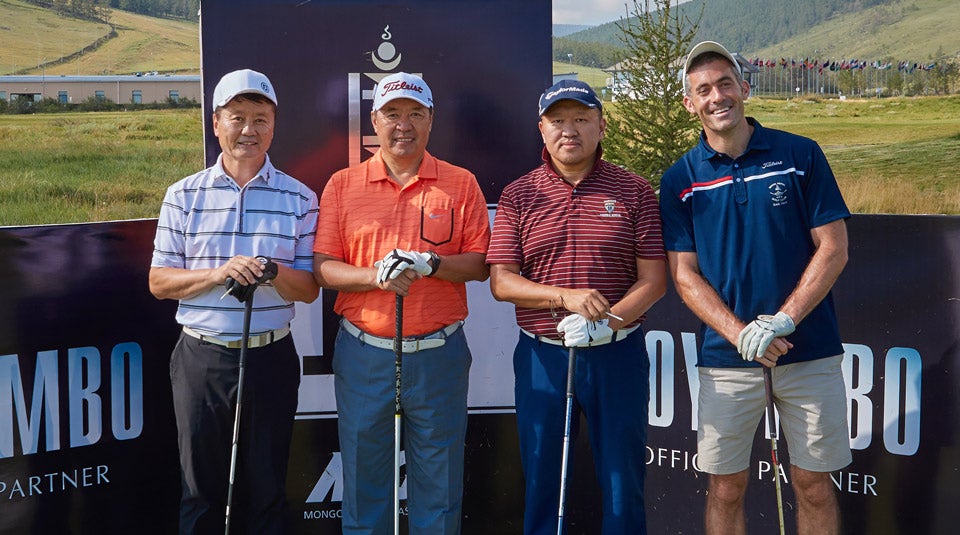
Khishgee hands me another ball. I take out my phone, open Google Translate, type out, “You’re a great caddie. And I’m sorry I’m failing you.”
The carnage piles up. I go out-of-bounds and into a water hazard on the same hole. I four-putt. I make a second quad. I lose five balls in the thick rough. I birdie the last hole — the No. 1 handicap — to shoot 100. By round’s end, I’m 41 shots behind the leader, Bayarkhuu Yanjiv. (On a more uplifting note, I am beating the other American by three.)
In the quiet of the clubhouse locker room, I conduct a post-mortem: I opened the Mongolian National Open 106-94. On moving day, I shot 100. Through three rounds, I have a score better suited for bowling: 300.
I’m not sure it’s the rental clubs.
* * *
Mongolian Golf is growing fast. Kevin Brand, a cheery British golf professional who’s been the head pro at Mt. Bogd for six years, sees it every day. “More and more people here are getting into golf,” he says. “This evening, for instance, I’ve got a group lesson with 20 people, and I guarantee that 19 of them have never picked up a golf club before.”
Brand winters in Spain with his wife, then returns to Mongolia for the start of the golf season. The speed at which his students pick up the game has impressed him. “If Mongolian ladies had the access 20 years ago that Korean ladies had, I firmly believe you’d be seeing Mongolians on the LPGA tour right now,” he says.
Mongolians have high expectations for their own for golf. Part of this stems from, of all things, sumo wrestling, a sport that Mongolians dominate. Many of the recent yokozuna (grand champion) titles have been won by Mongolians. “Because of how well we do at sumo, we expect the same results for golf,” says Jambaldorj, the former golf-course manager.
According to Jambaldorj, of the roughly 30 Mongolian sumo wrestlers competing in Japan, most play golf on off-days. A few have already retired back to Ulaanbaatar, meaning that while you won’t spot Tom Brady or Steph Curry on the courses here, you might just run into a sumo world champ.
* * *
Maybe Bilgee can help me. She’s one of the caddies at Mt. Bogd. All the loopers are female and most play golf — trained for free by Brand himself.
“Each year we get 20 new ladies, and within a couple of hours they’re bombing it 150 down the range,” he says. Many of the caddies live in the Ger District (the poorest neighborhood in Ulaanbaatar) and have family living nomadically in the countryside, where they’ll return in the winter.
“It’s important to us that they know the game,” says Amarkhuu, the Sky Resort CEO. “Our caddies have gotten very good at golf. Several actually play in the Mongolian National Open.”
But nobody is close to Bilgee. Five-feet-tall, quiet, with a humble demeanor and big glasses, Altanbileg (her nickname, Bilgee, means “Golden Gift”) began caddying at Mt. Bogd five years ago. In 2016, she finished second in the Mongolian National Open.
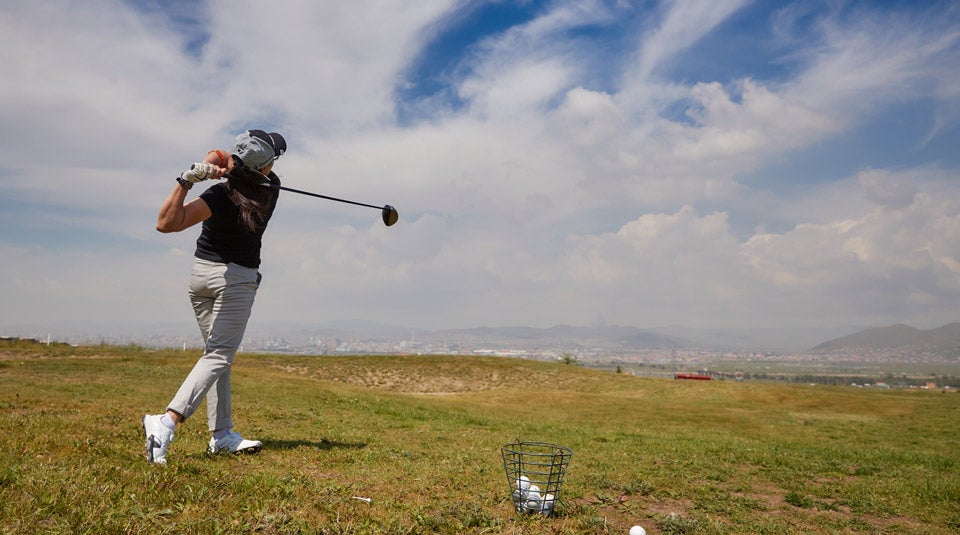
“I play once a week, on Sunday,” Bilgee tells me as we stand behind the club’s driving range. A camera crew from Mongolian National Television scurries past us, off to film players on the course for an evening news recap. At this year’s Open, Bilgee caddied in the men’s division each morning, then played her own round in the afternoon. She is a hero to her fellow caddies.
Her eyes light up when she tells me about the 2016 tournament. “I felt amazing!” she says. There’s something so endearing about Bilgee. She loves the game. With any luck, she will be representing Mongolia in a future Asia-Pacific Am. She already represents what is wonderful about Mongolian golf — its potential to transform lives. “Swing smooth,” Bilgee tells me as I leave for my round. It’s good advice. If only I could find a way to apply it.
* * *
After four rounds, two players are tied at 321 — 33 over. (I’ve finished a mere 83 shots back, losing five balls on the front nine before coming home in a metaphorical ambulance.) The title will be decided in a sudden-death playoff between Munkhbaatar Boldbaatar, a skinny, quiet 32-year-old who picked up golf as a driving range ball-boy, and Khayankhyarvaa Amgalan, a former Mongolian pop star. A 50-person gallery has gathered at the 1st tee, a cluster of smiles and golf caps.
A murmur morphs into commotion. There’s been a scoring snafu. The leaderboard back at the clubhouse shows that Amgalan has, in fact, won by a shot. No playoff required! Everyone reassembles back at the clubhouse. A crowd huddles around the officials’ table. Scorecards are checked. Correction: a playoff is required! Everyone troops back down to the tee.
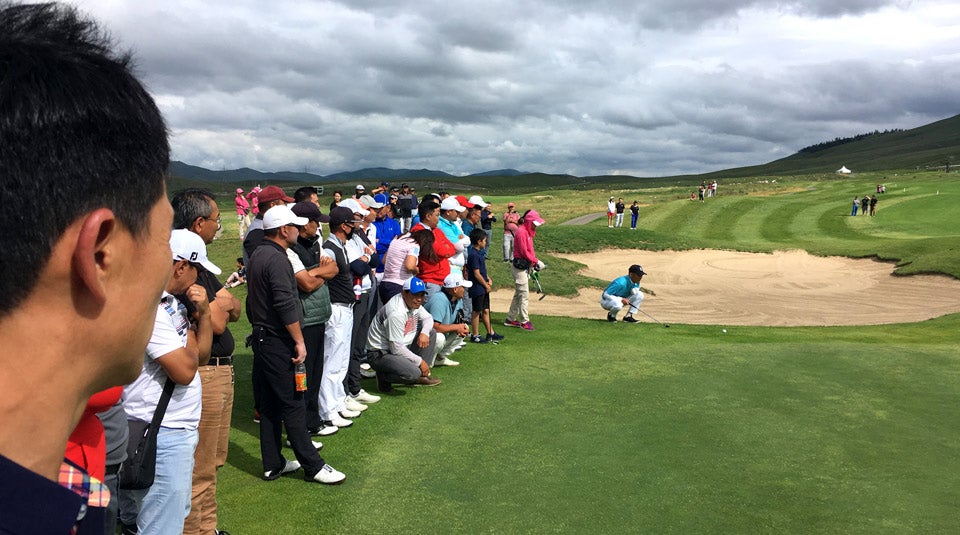
Boldbaatar and Amgalan stripe their drives. The pressure is intense. These guys are playing for their National Open. Their Shinnecock. As the gallery follows the two-ball down the fairway, I spot my playing partners from day one, Puba and Margad, and my lotion-dispensing friend Munkhtushig, wearing a TaylorMade visor and neck bandanna. We bump fists.
Boldbaatar and Amgalan halve the hole. The playoff moves to the par-4 10th. The crowd follows breathlessly.
Boldbaatar dumps his approach shot into the greenside bunker — and with it his shot at the title. Amgalan finds the green and coolly two-putts for the win. The former pop star is mobbed by friends and spectators in MGA sweatshirts. The MGA president wraps him in a bear hug. I stand a few feet away in the warm sunshine, taking it all in. Seven weeks after the U.S. Open, another national champion has been crowned.
* * *
“The winner of the 2018 Mongolian National Open: Khayankhyarvaa Amgalan!”
Mongolian post-round award ceremonies put ours to shame. There’s a deejay on stage blasting the triumphant opening to The Final Countdown as Amgalan hoists the hefty trophy above his head and lets out a Maximus-Gladiator-grade roar. Onlookers roar back. Behind our seats, two lanky Mongolian models pose for photos, promoting the tournament sponsor, Soyombo Vodka.
I lean back in my seat, my 43rd place Mongolian National Open finish good enough for both a PW (personal worst) and a framed photo of my group on the 1st tee. Bilgee is at a nearby table, seated with several Mt. Bogd members. She finished 4th this year and won the long-drive contest. Surrounding me are my new Mongolian friends, all madly in love with the same game that I grew up playing 6,000 miles away in Massachusetts. Forget my ugly score. Golf has once again opened my eyes to a beautiful new world.
Oliver Horovitz is the author of An American Caddie in St. Andrews.
YOUR TURN: Here’s how to play in the Mongolian National Open
When: August 2-5, 2019
Where: Ulaanbaatar, Mongolia
How to get there: United Airlines flies from multiple U.S. cities to Beijing, connecting to Air China to Ulaanbaatar. (A Chinese visa is not required for the transfer; you can even plan a visa-free layover in Beijing for up to 72 hours.) Round-trip fare starts at about $1,200.
How to register: Email the general secretary of the Mongolian Golf Association, Margad Byambajav, at info@mga.mn.
Where to stay in Ulaanbaatar:
Budget option: Zaya Guest House. From about $20/night. Very low-key BnB, but perfectly comfortable, and with a friendly, English-speaking manager.
Lux option: Shangri-La Hotel Ulaanbaatar. From about $240/night. The most luxurious hotel in Mongolia, located in downtown Ulaanbaatar. If you can afford it, it’s well worth it.
Visa logistics: U.S. citizens staying less than 30 days do not require a visa.
What else to do while in Mongolia:
Visit the famous Gobi Desert (1.5-hour flight from Ulaanbaatar), where you can ride 2-humped camels, go hiking, and sleep in a luxury ger (yurt) at Three Camel Lodge with Nomadic Expeditions
Visit Gorkhi-Terelj National Park (45-minute drive from Ulaanbaatar, and home to UB-2 Golf Course and Genghis Khan Country Club)
See the 130-foot-tall statue of Genghis Khan (35-minute drive from Ulaanbaatar; close to Gorkhi-Terelj National Park)
Visit Lake Khövsgöl, the “Blue Pearl of Mongolia” (1.5-hour flight from Ulaanbaatar). Camp lakeside for a night at Toilogt Ger Camp
Hike the Altai Mountains, home to the Kazakh Eagle Hunters (3-hour flight from Ulaanbaatar)
Visit the Zaisan Memorial, a World War II memorial perched on a tall hill overlooking Ulaanbaatar, providing tremendous views of the city.
Go horseback riding, available throughout Mongolia
Play a round of Screen Golf at JSL Golf in Ulaanbaatar
